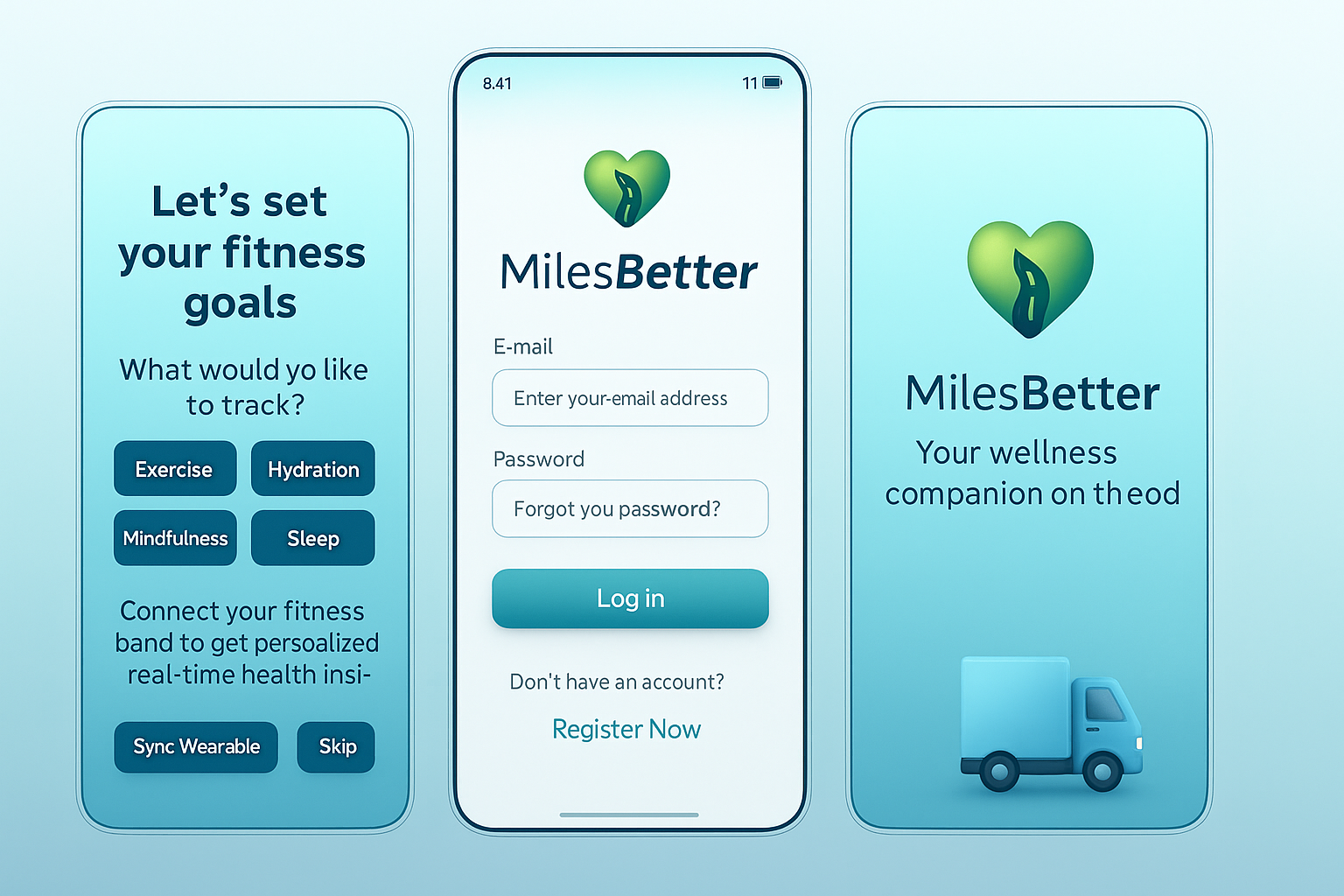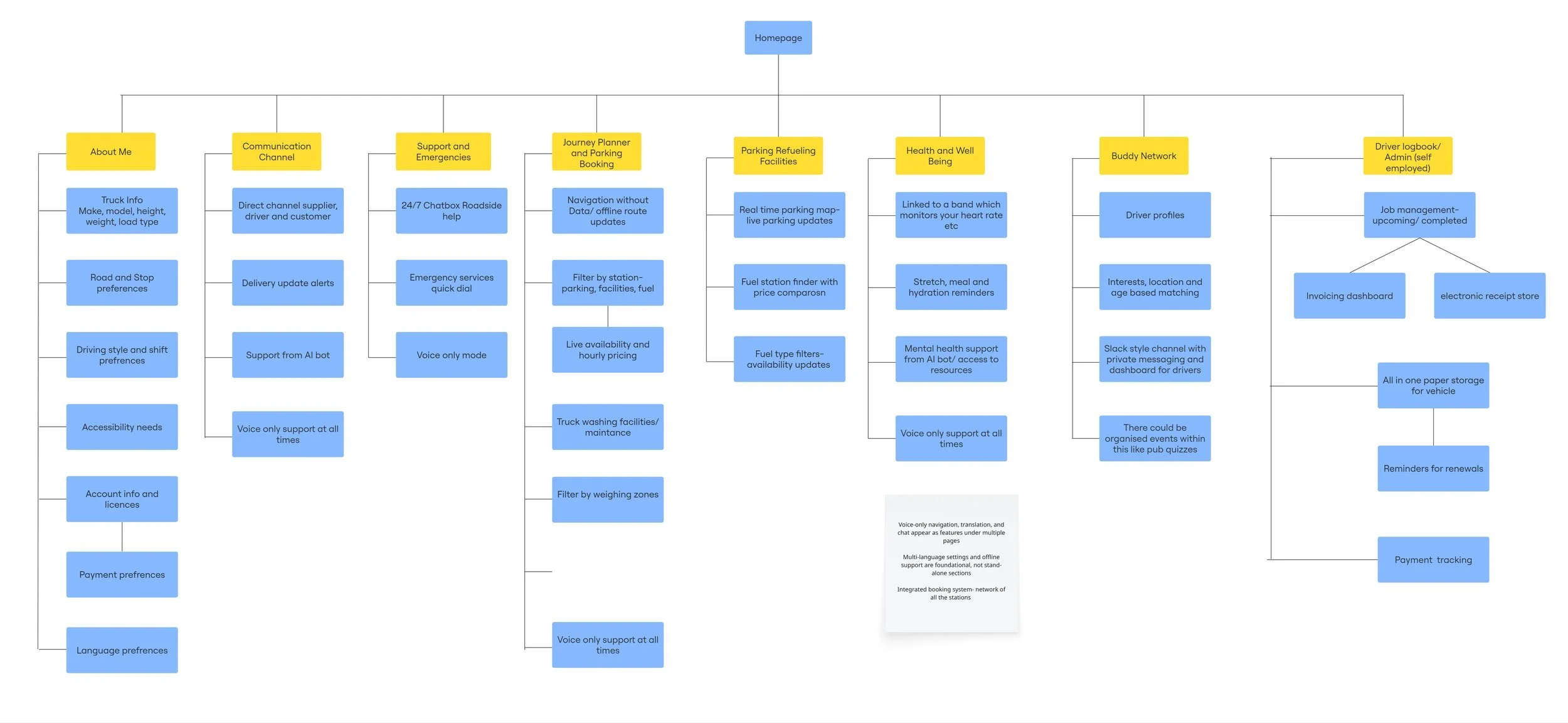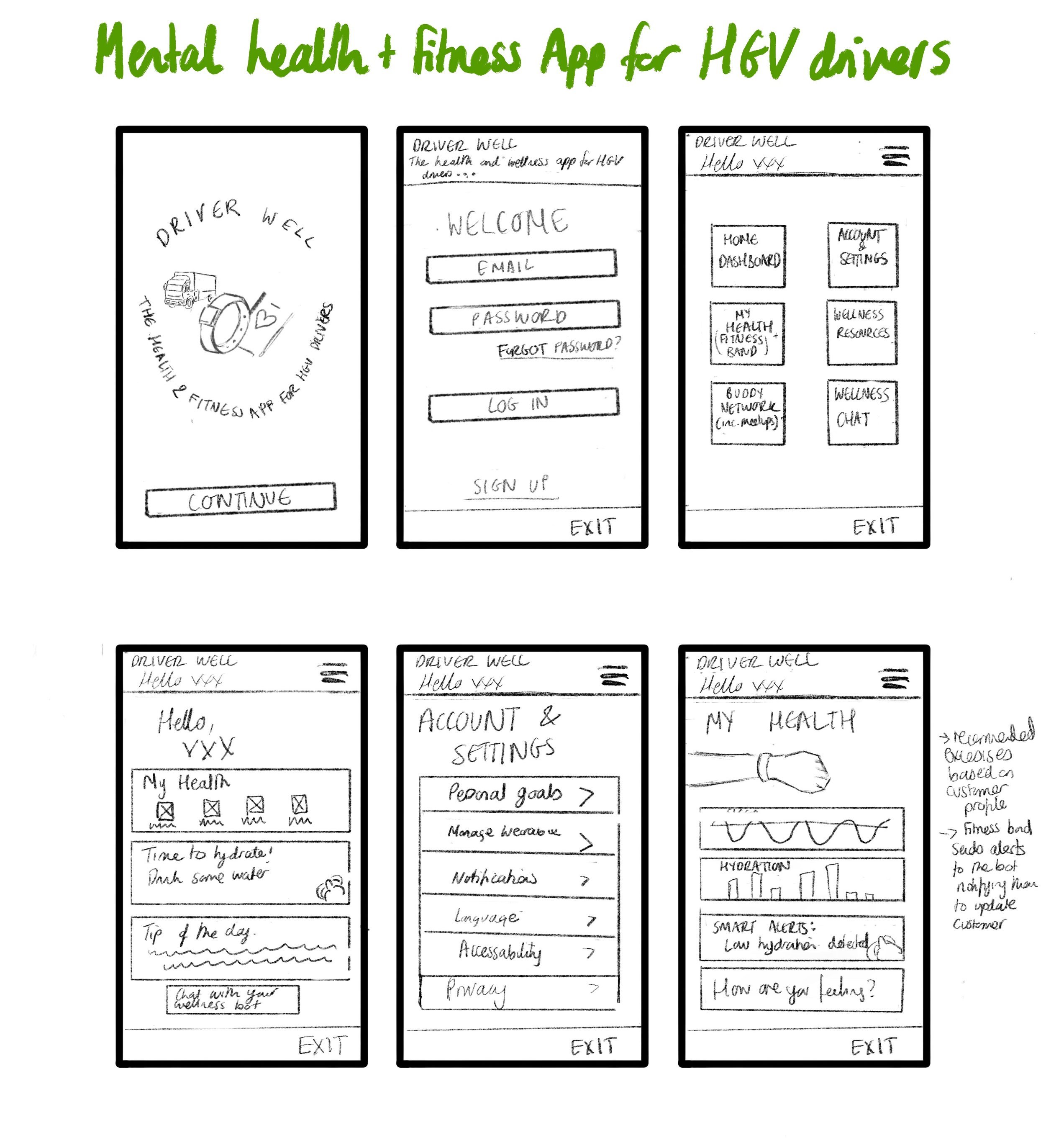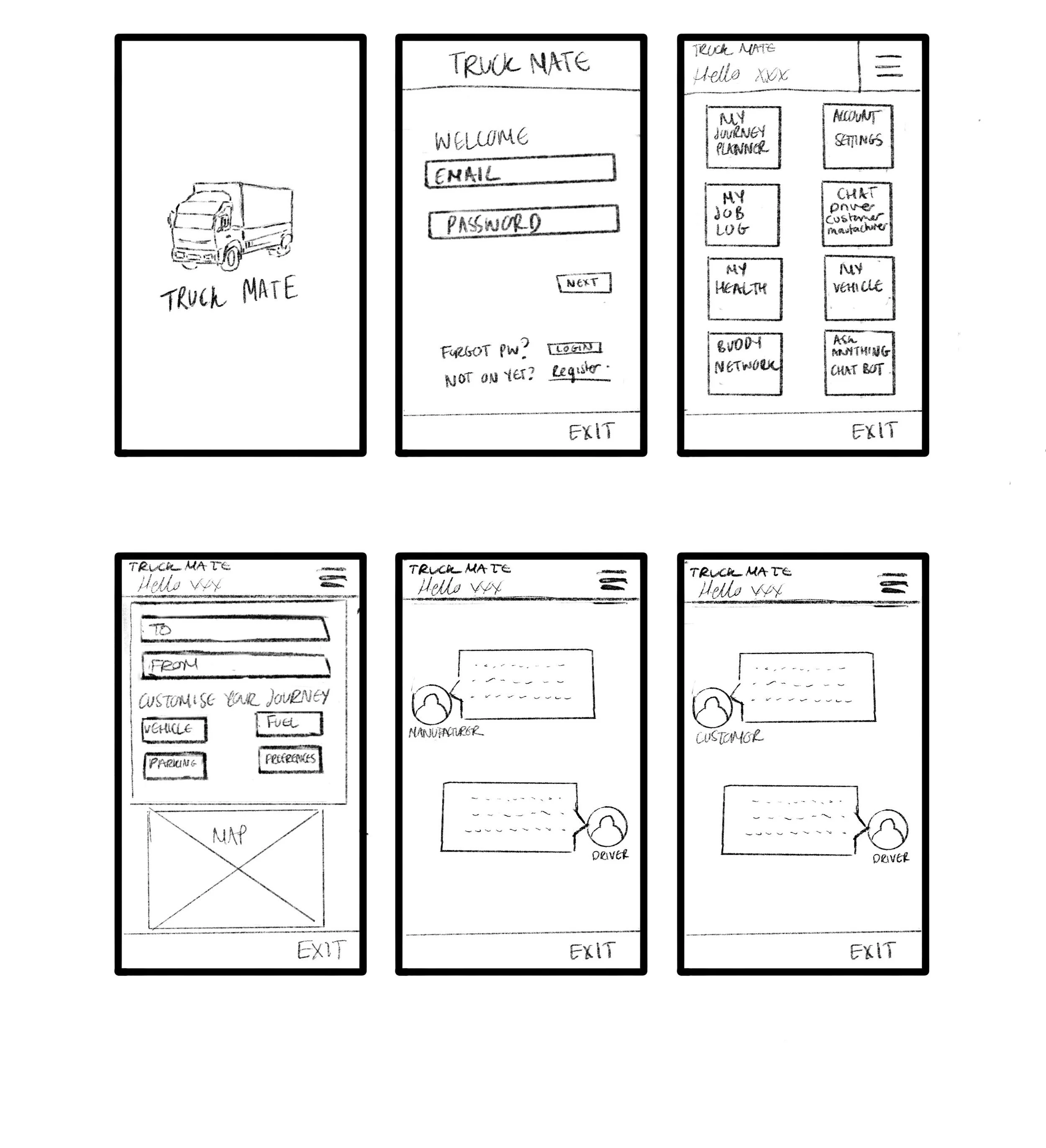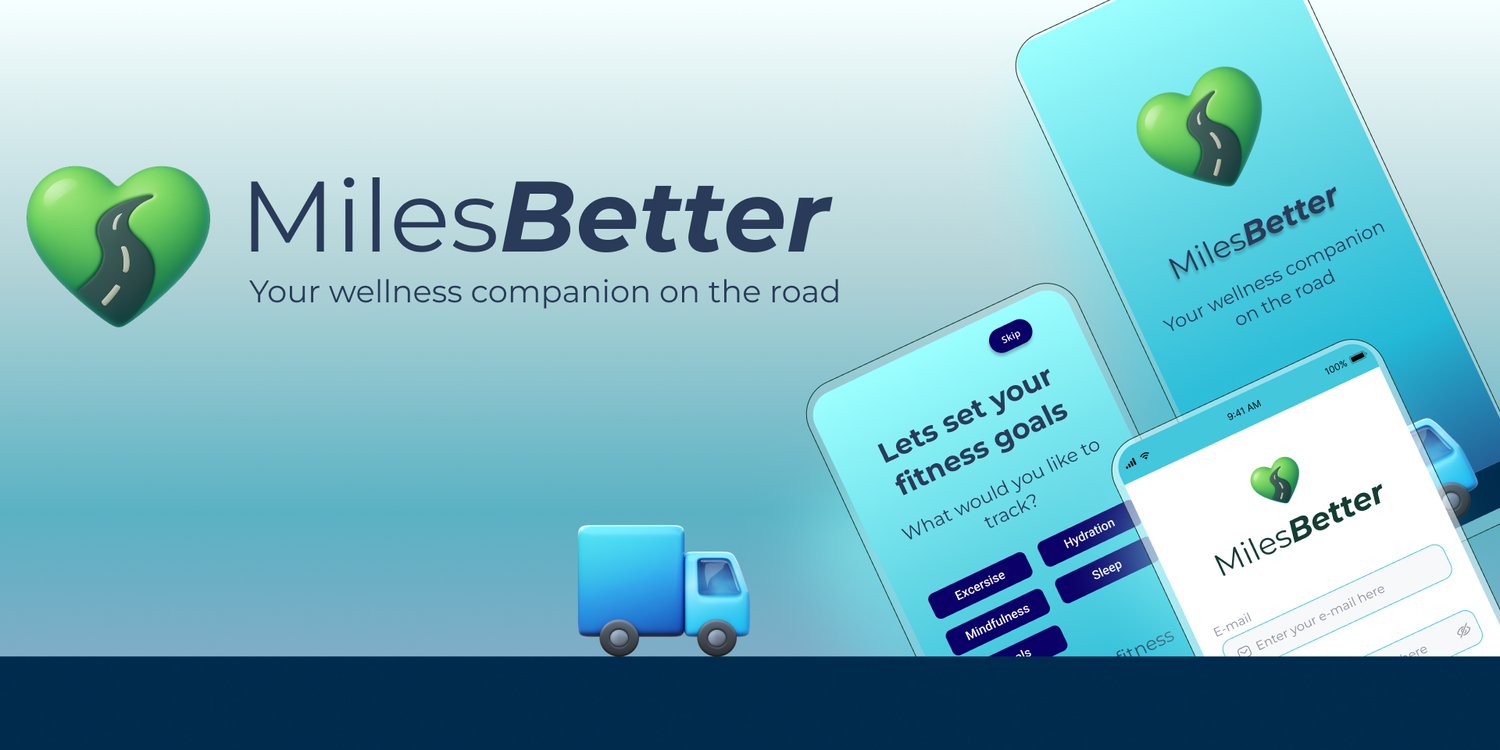
Miles Better
A wellness app and wearable integration for HGV drivers to support fitness, nutrition, and mental health on the road.
Scoped down from a larger product concept to help minimize travel times on the road, at pick-up and delivery points, and ensure drivers can find safe parking (overnight) with facilities. Includes an integrated booking platform.
Role
This was a solo project.
Roles included conducting user interviews, developing personas, creating wireframes, and prototypes in Figma.
Download the project here
Research and proposals
Problem:
HGV drivers face unique health challenges — including long hours, limited access to fitness facilities, unhealthy eating habits, and social isolation. Existing wellness apps were too complex, inaccessible, or not suited to drivers’ on-the-go lifestyles.
Solution:
MilesBetter is a mobile app designed specifically for HGV drivers. It provides simple, accessible tools to support mental health, fitness, and nutrition, with features that fit seamlessly into their daily routine, whether online or offline. Features include:
Quick voice or text onboarding
Wellness dashboard with fitness and nutrition insights
Buddy network for driver connections
Offline support for drivers on the move
Note, this is not the full solution to the problems HGV drivers face. Full research proposal here
Design Process
Value Proposition
A wellness app tailored for HGV drivers that supports mental health, fitness, and connection — designed to work on the road, even offline.
User Research
Conducted 6 semi-structured interviews with long-haul drivers
Developed a user interview script focusing on lifestyle challenges, current habits, and attitudes toward wellness tech one from the rest.
Personas
Created three user personas based on patterns and pain points from interviews.
Information Architecture
Mapped out the app’s structure to ensure intuitive navigation:
Dashboard
Wellness Resources
Buddy Network
Settings
Help / AI Chat
Task Flows
Outlined core tasks for users:
Signing up via voice or text
Tracking wellness stats
Finding and joining driver groups
Syncing a wearable device
Accessing offline wellness content
Sketches and low-fidelity wireframes
Created low-fidelity sketches on paper and in Figma- Experimenting with flow and app names.
Iterated wireframes to validate flows and screen hierarchy
High-fidelity prototypes
Developed polished UI mockups using a masculine yet approachable aesthetic
Designed for accessibility, clarity, and mobile use under low-attention conditions
Testing and iteration
Conducted remote usability testing with 3 target users
Adjusted button sizes, reworded onboarding copy, and improved navigation hierarchy based on feedback
Continued iterative testing throughout development

